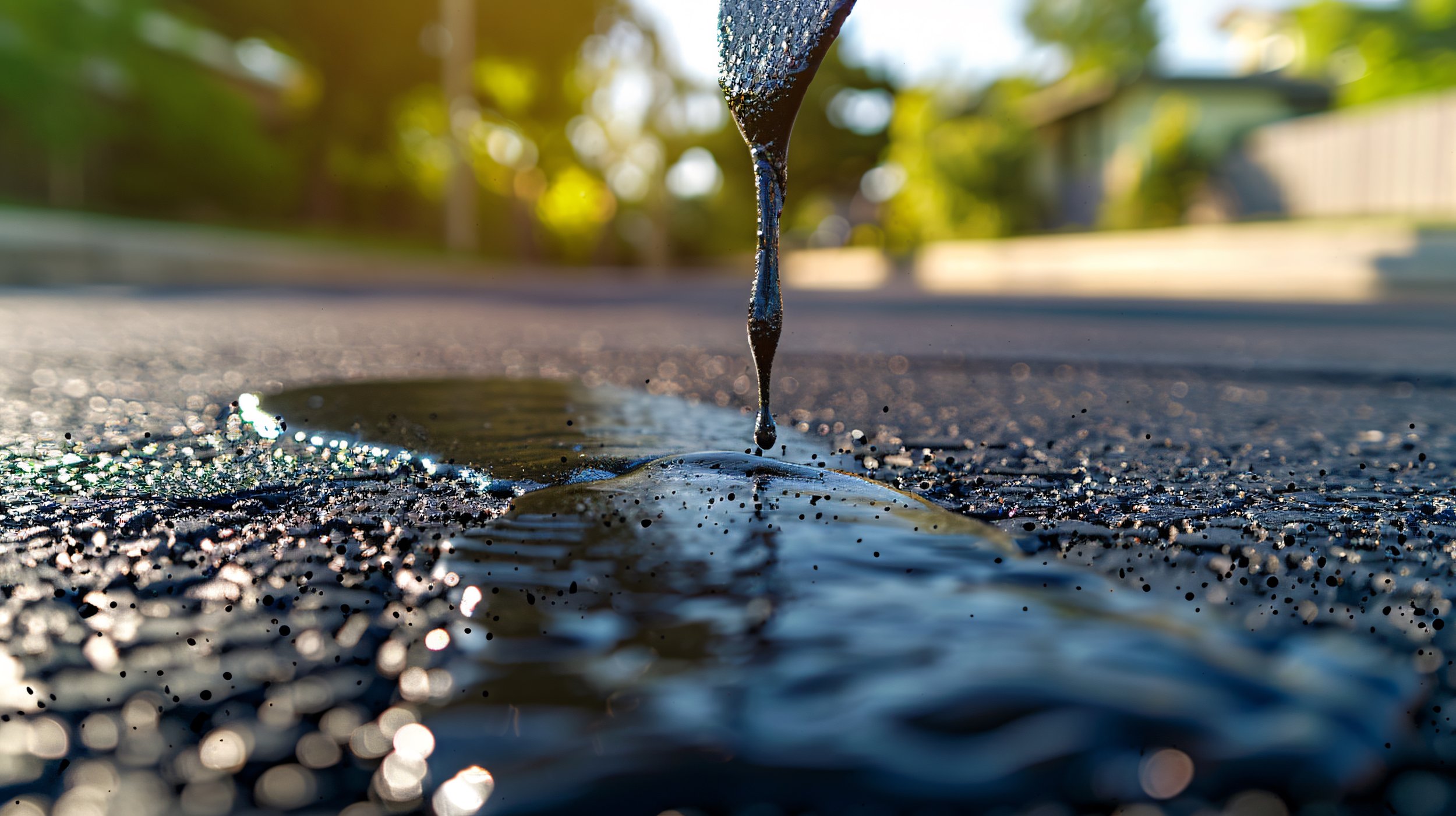
Sealcoating
ASPHALT EMULSION SEAL COATS
These are the most commonly used seal coats for asphalt surfaces and are made by heating asphalt/bitumen and water along with an emulsifying agent. They are great for curing cracks and potholes, providing protection against UV rays, and giving a dark appearance to the asphalt surface, enhancing their appearance. Besides, they don’t have any major disadvantages and hence, are the preferred choice for asphalt surfaces.
Asphalt Driveway Sealcoating
Among our specialized services, asphalt driveway and parking lot seal coating take precedence.
From meticulous planning to using high-quality sealants, we make sure to provide you with the best while rejuvenating your driveways.
Asphalt, in general, has a poor resistance against harsh New England weathering, de-icing salts, gasoline, and other chemicals. Therefore, the seal coating used on asphalt driveways should be made up of high-quality materials to ensure maximum resistance against weathering and different chemicals.
We do a thorough investigation of your asphalt surface, and offer the most suitable and high-quality sealer fulfilling all your requirements. From binders to fillers, our seal coat mixes are made using the best materials to ensure maximum protection even in the most challenging circumstances.
The Sealcoating Process
1. SITE PREPARATION
First, The area where the seal coat is to be applied is closed using barriers to ensure minimum disruption. Then the area is cleaned properly to remove any dirt, debris, or loose material to ensure proper adhesion of the coat.
2. CLEARING THE EDGES
The edges of the area are properly cleared and trimmed to ensure that the seal coat is applied evenly to all the edges, giving the site a sharp and clean look.
3. CLEARING THE CRACKS
All the cracks in the area are properly cleaned by blowing compressed air in them. This ensures that the dust buried deep in the cracks is removed. Afterward, the cracks are filled with appropriate sealers.
4. SEAL COAT APPLICATION
Using state-of-the-art machinery and technology, we apply an even layer of the seal coat. We make sure to cover every nook and cranny of the area with a seal coat
5. CURING AND DRYING
After application, the seal coating undergoes a curing process. This ensures a solid bond with the surface and allows the coating to dry completely, creating a resilient barrier.

